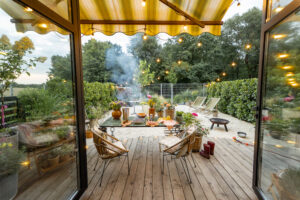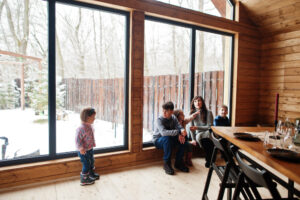Building a custom bookshelf can be a highly rewarding project, allowing you to create a piece of furniture that perfectly fits your space, style, and storage needs. Whether you’re an experienced woodworker or a novice, constructing a bookshelf over a weekend is entirely achievable with careful planning and execution. In this guide, we’ll walk you through the process of building a custom bookshelf, ensuring you have all the information you need to create a beautiful and functional piece.
Why Build a Custom Bookshelf?
Before diving into the construction process, it’s essential to understand the benefits of building a custom bookshelf. Customization allows you to tailor the dimensions, style, and finish of the bookshelf to your specific needs. Unlike mass-produced options, a custom bookshelf can be designed to fit into any space, whether it’s a narrow nook, a wide wall, or an oddly shaped corner. Additionally, building your own bookshelf gives you the opportunity to use high-quality materials, ensuring durability and longevity.
Planning Your Bookshelf
The success of your bookshelf project hinges on thorough planning. Start by measuring the space where you intend to place the bookshelf. Consider the height, width, and depth, keeping in mind the dimensions of the books or items you plan to store. Sketch out your design on paper or use a design software tool to visualize the final product. Decide on the number of shelves, their spacing, and whether you want adjustable or fixed shelves.
Materials and Tools Needed:
-
Materials:
- Plywood or solid wood for the shelves and sides
- Wood screws
- Wood glue
- Sandpaper
- Primer and paint or wood stain
- Finishing nails
- Back panel (plywood or beadboard)
- Edge banding (optional)
- Wood filler
-
Tools:
- Circular saw or table saw
- Power drill
- Clamps
- Measuring tape
- Level
- Square
- Paintbrushes or rags for staining
- Safety goggles and gloves
Step 1: Cutting the Wood
Start by cutting your wood to the desired dimensions. The sides of the bookshelf will determine the overall height, while the shelves should be cut to the width you’ve planned. If you’re using plywood, ensure that the cuts are straight and clean. You may want to use a guide to keep your cuts precise. After cutting, sand all the pieces to remove splinters and rough edges.
Pro Tip: Label each piece after cutting to avoid confusion during assembly. This is especially helpful if your bookshelf has multiple different shelf sizes or a more complex design.
Step 2: Assembling the Frame
Begin assembling the bookshelf by attaching the sides to the top and bottom pieces. Apply wood glue to the joints before securing them with screws for added stability. Use clamps to hold the pieces in place while you work, ensuring everything remains square. If your design includes a middle divider, install it at this stage. Once the basic frame is assembled, you should have a solid structure that resembles a large, empty box.
Pro Tip: Always pre-drill holes for screws to prevent the wood from splitting. Use a countersink bit to ensure that the screws sit flush with the wood.
Step 3: Installing the Shelves
With the frame assembled, it’s time to install the shelves. Depending on your design, you may have fixed or adjustable shelves. For fixed shelves, measure and mark their positions on the sides of the frame. Apply wood glue to the ends of each shelf, then slide them into place, securing them with screws or finishing nails. If you’re opting for adjustable shelves, drill evenly spaced holes along the sides and use shelf pins to support the shelves.
Pro Tip: Use a level to ensure that each shelf is perfectly horizontal before securing it. Even a slight tilt can become more pronounced when loaded with books.
Step 4: Attaching the Back Panel
The back panel adds stability to your bookshelf and gives it a finished look. Cut the panel to size and attach it to the back of the frame using finishing nails or screws. Be sure to check that the frame is square before securing the panel. If you prefer a more decorative look, consider using beadboard or tongue-and-groove panels for added texture.
Pro Tip: If you’re planning to paint or stain the back panel a different color than the rest of the bookshelf, do so before attaching it to the frame.
Step 5: Finishing Touches
Now that your bookshelf is fully assembled, it’s time to add the finishing touches. Fill any holes or gaps with wood filler and sand them smooth once dried. If you’re using edge banding to cover the exposed edges of plywood, apply it now using an iron or edge banding tool. Sand the entire bookshelf to prepare it for painting or staining.
Painting or Staining:
- Painting: Apply a coat of primer followed by two coats of paint, sanding lightly between coats for a smooth finish.
- Staining: Apply your chosen stain with a rag, wiping off the excess to achieve your desired color. Once the stain is dry, apply a clear polyurethane finish for protection.
Pro Tip: Always work in a well-ventilated area when painting or staining and wear protective gear to avoid inhaling fumes.
Step 6: Installation and Securing
Once the finish is dry, move the bookshelf into its designated spot. If your bookshelf is tall or narrow, consider securing it to the wall to prevent tipping. This is especially important in homes with children or pets. Use L-brackets or anti-tip kits for this purpose.
Pro Tip: Use a stud finder to locate the wall studs before securing the bookshelf. This ensures a strong and stable attachment.
Conclusion
Building a custom bookshelf over a weekend is a project that requires planning, patience, and attention to detail, but the result is a unique and functional piece of furniture that can enhance any room in your home. By following these steps, you can create a bookshelf that not only meets your storage needs but also reflects your personal style and craftsmanship.
Remember, the key to a successful DIY project is to take your time and enjoy the process. Happy building!








Reader Interactions